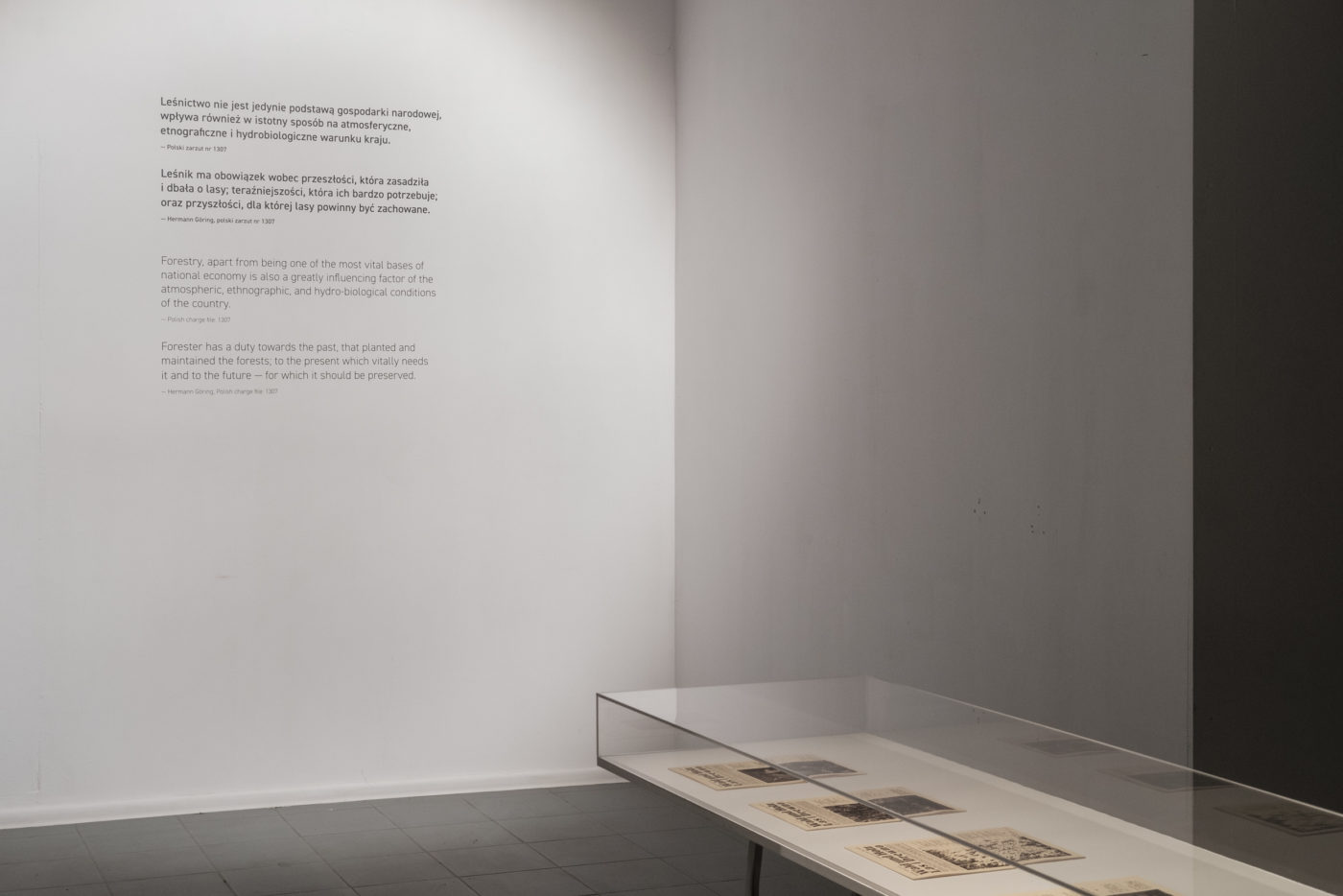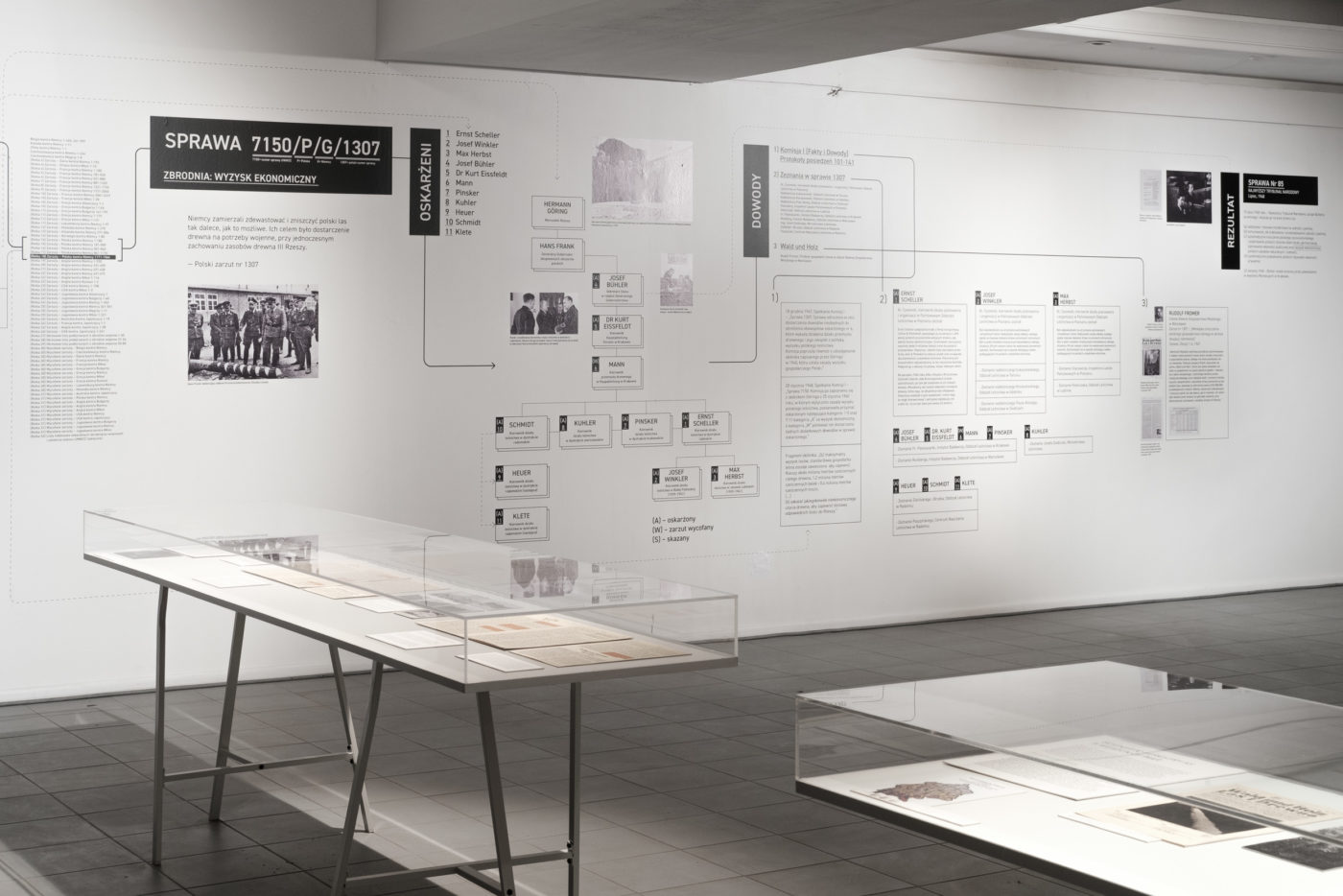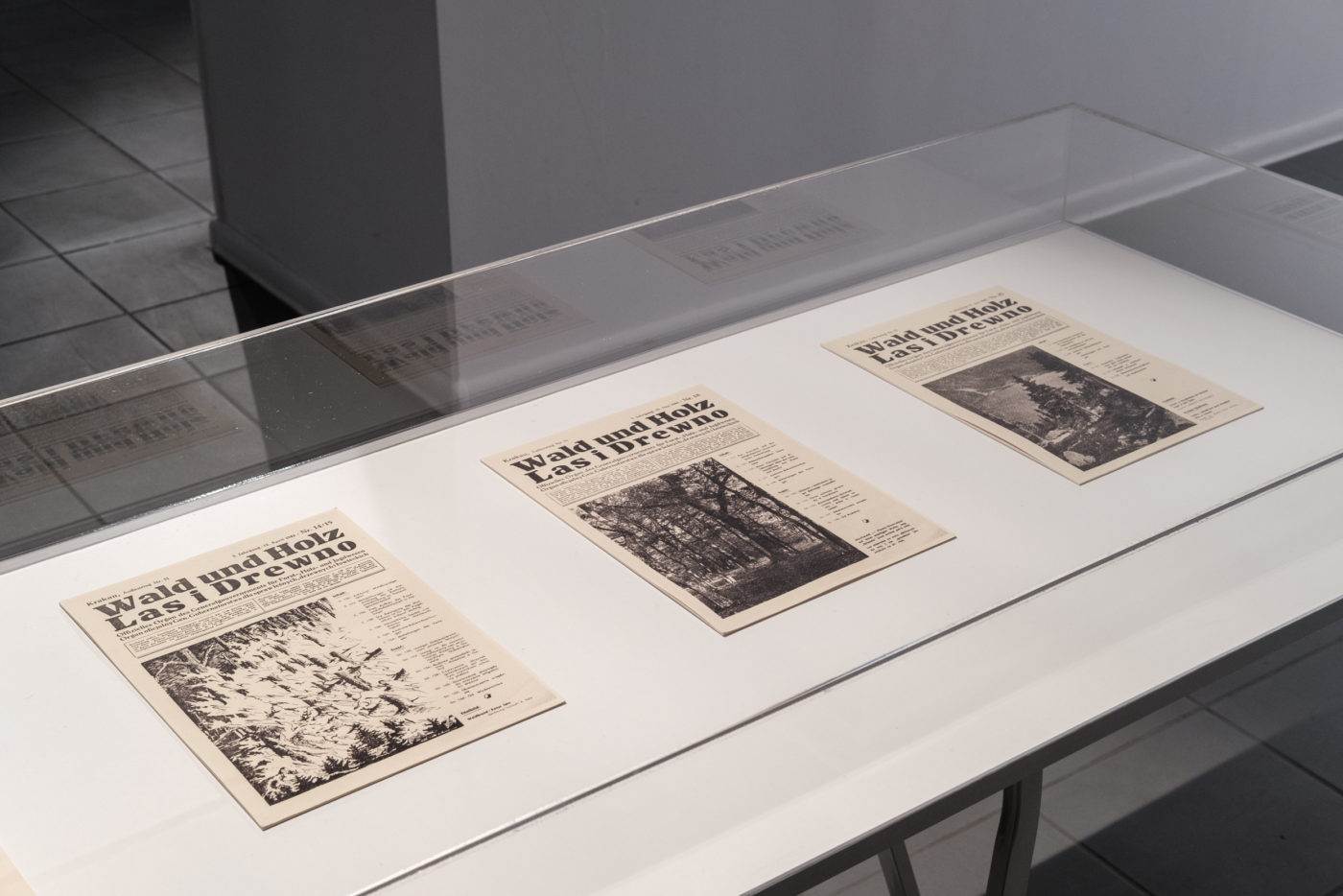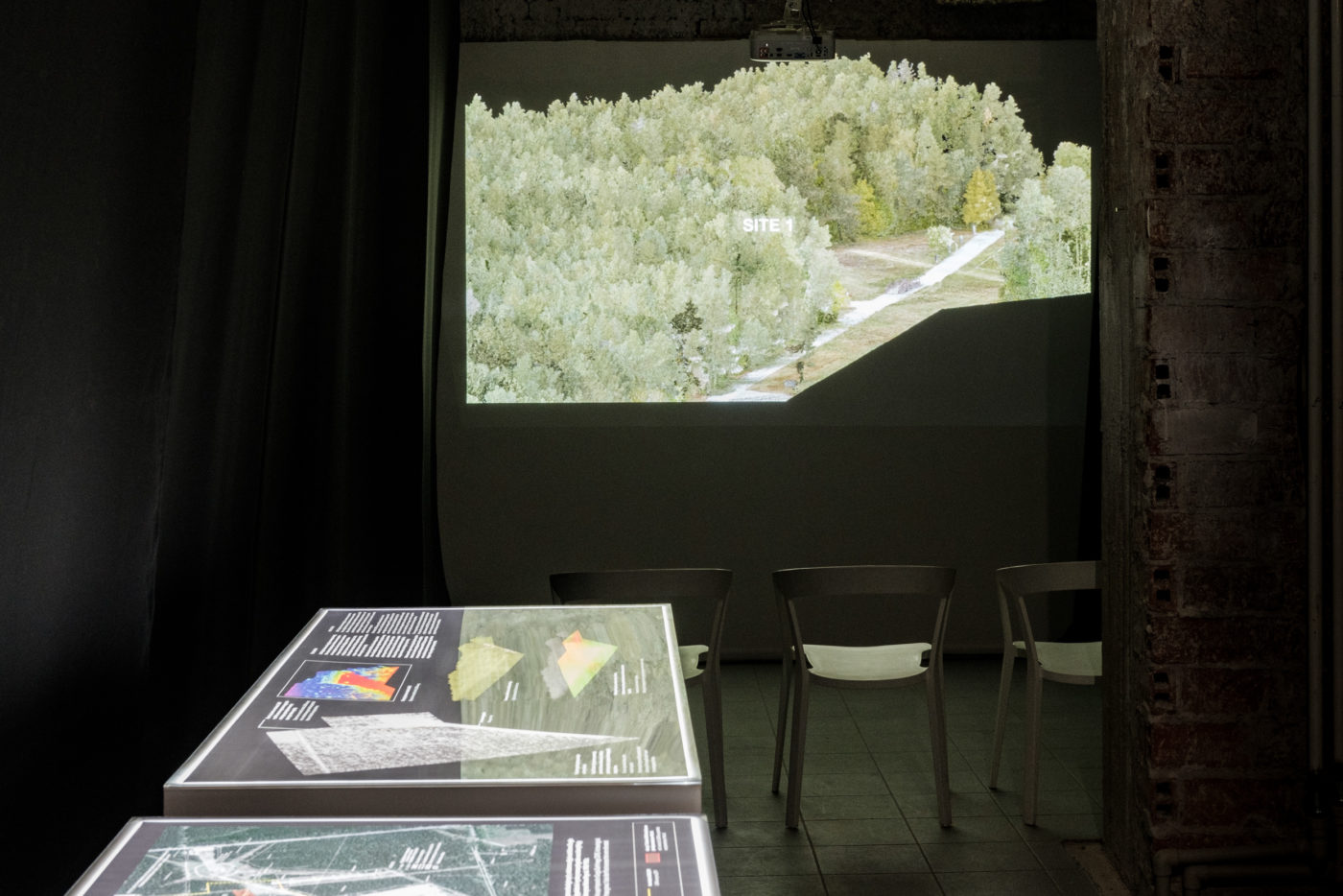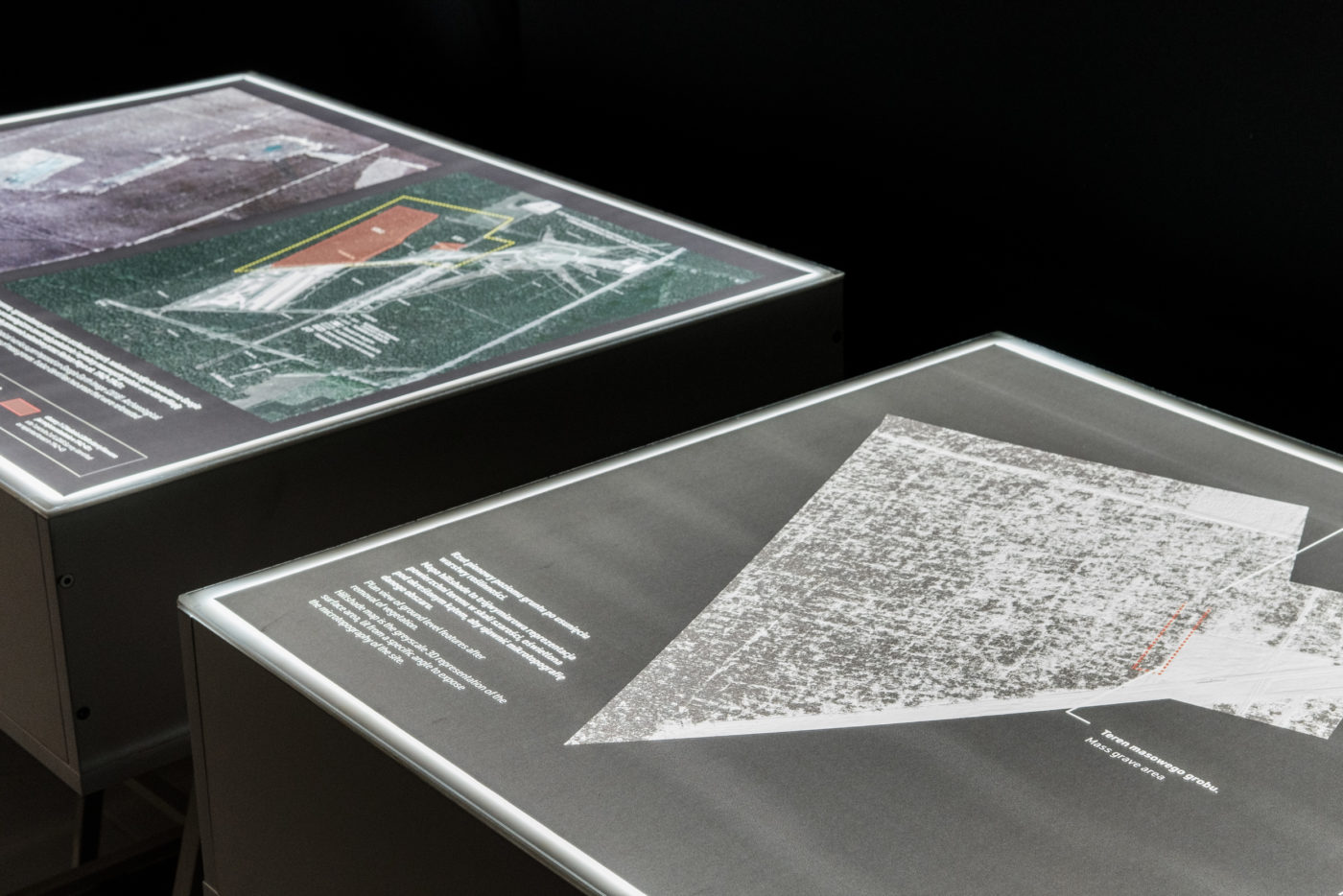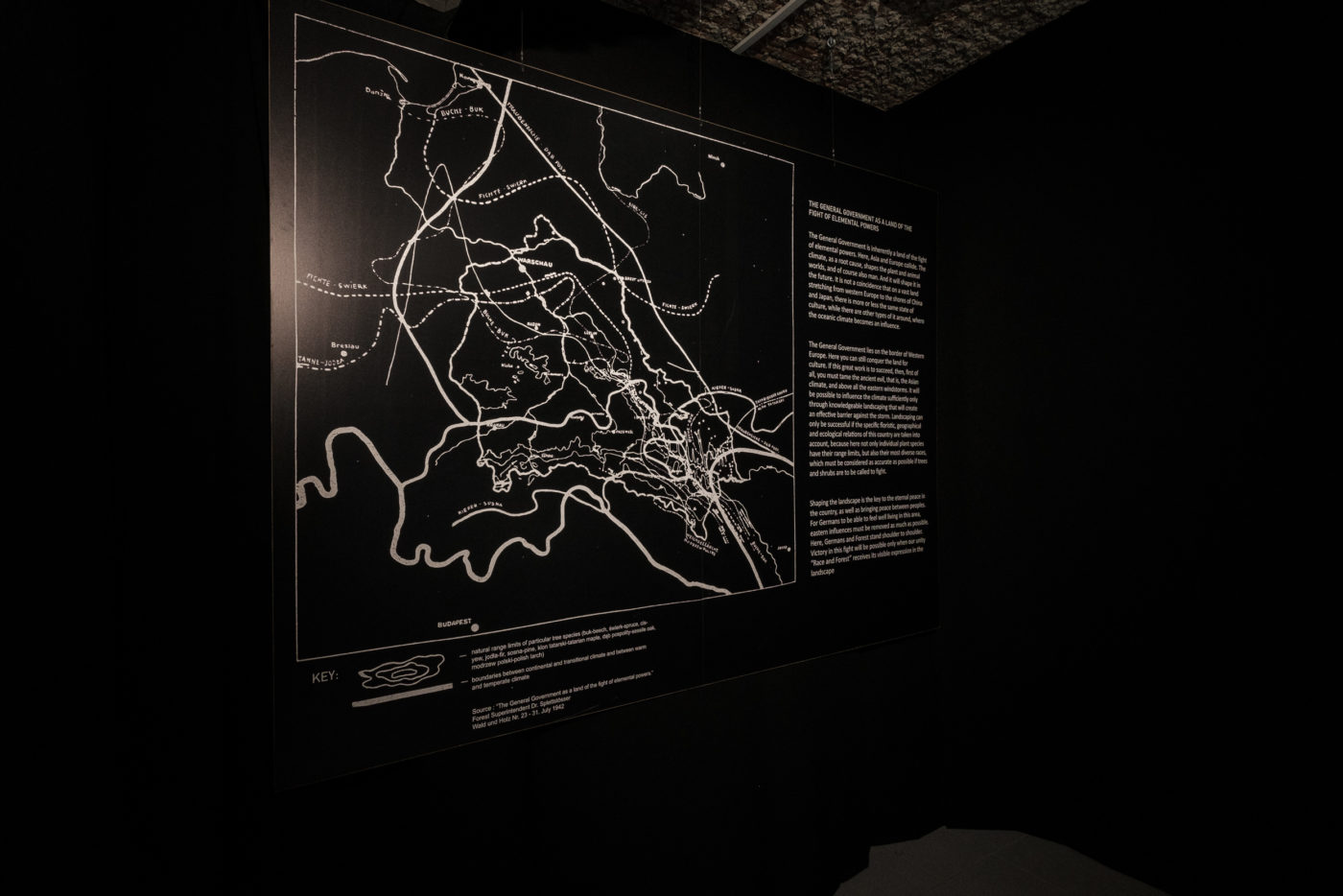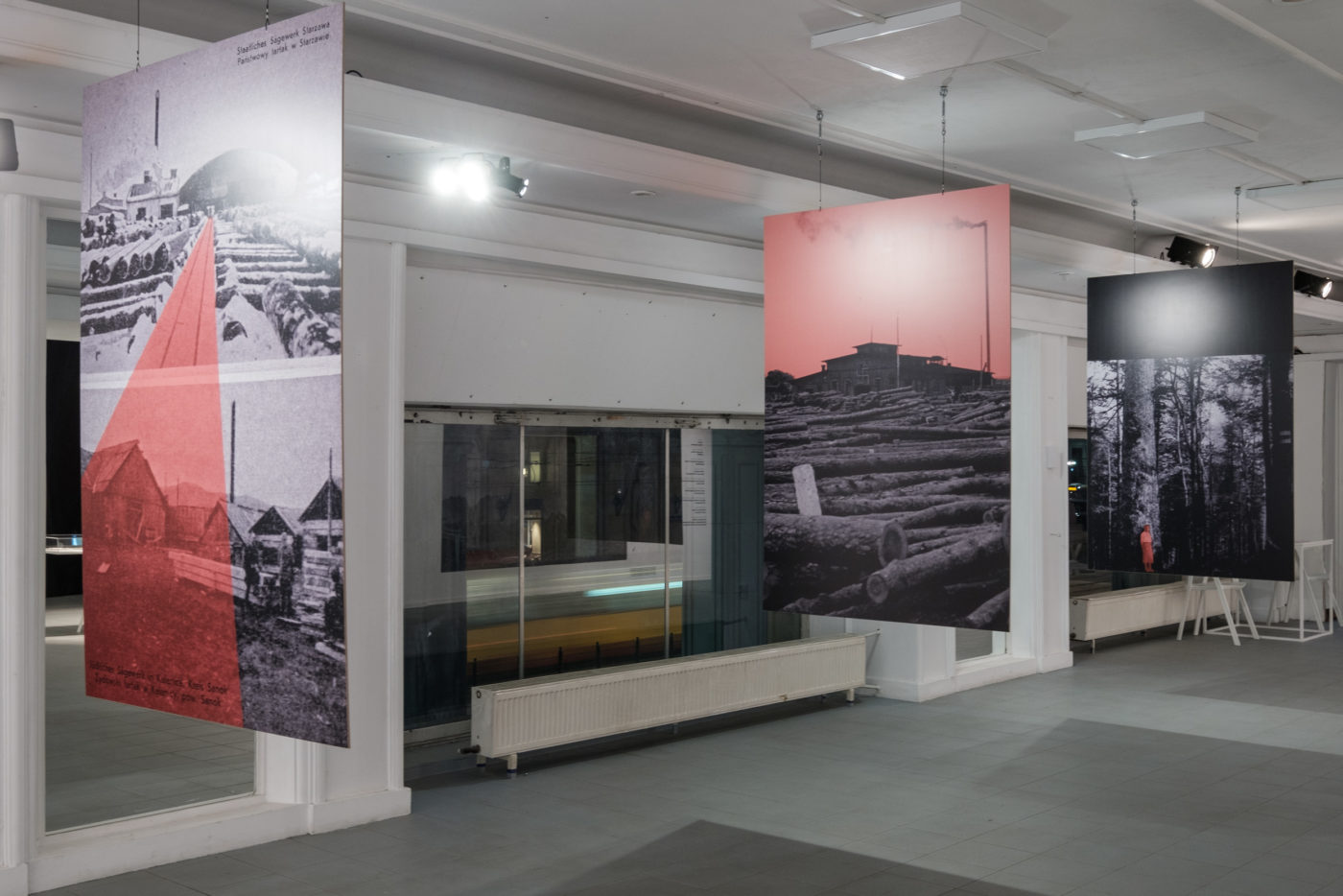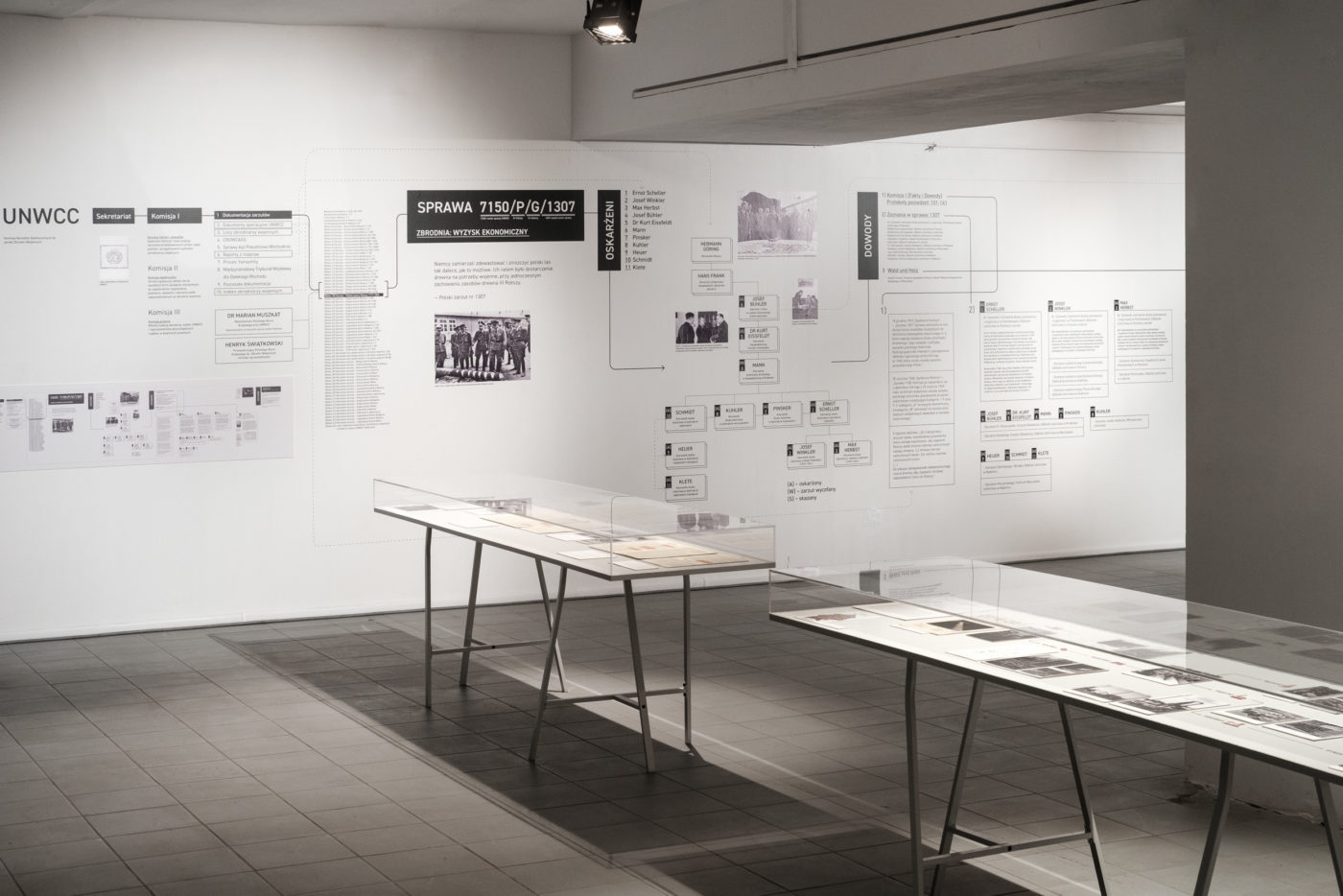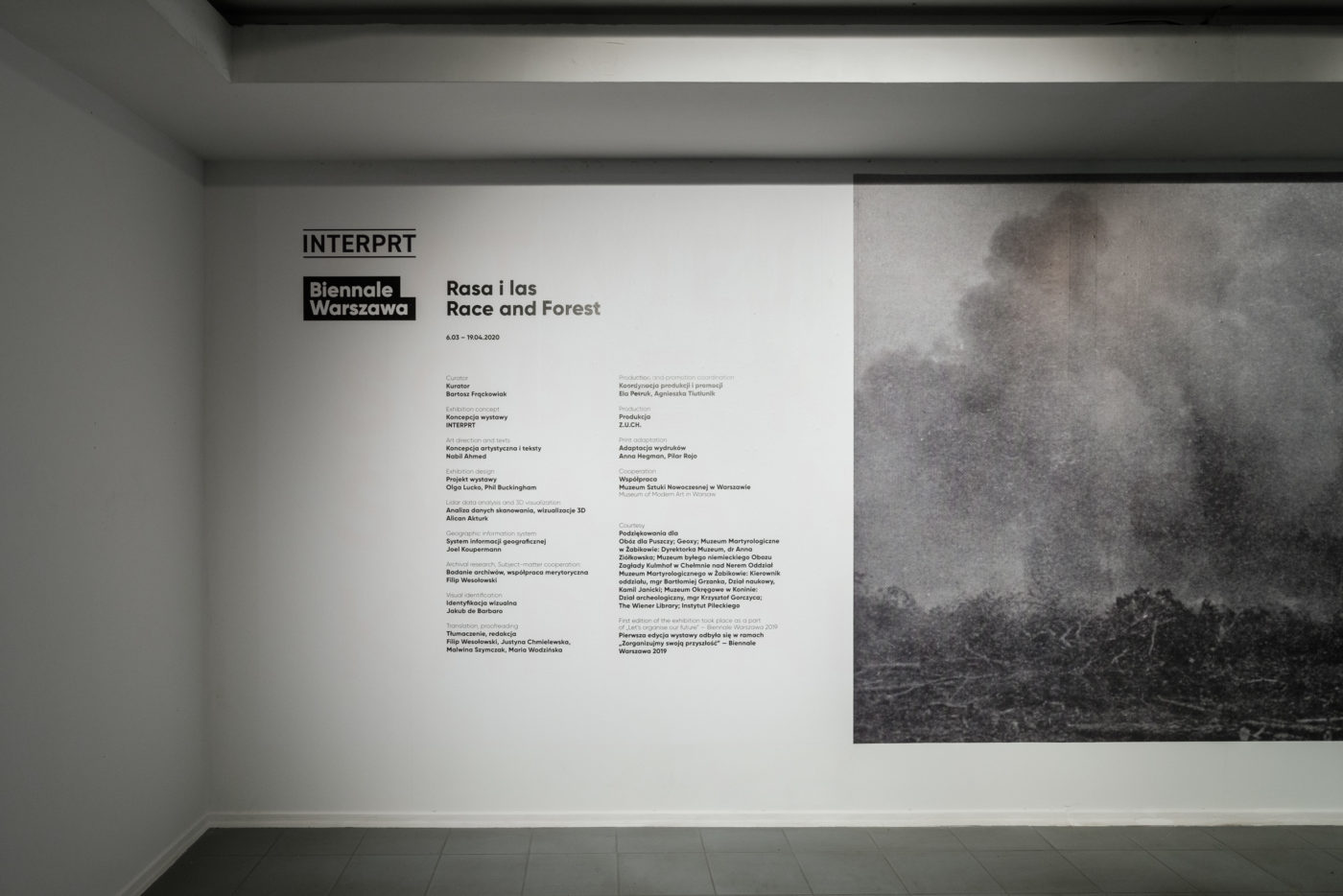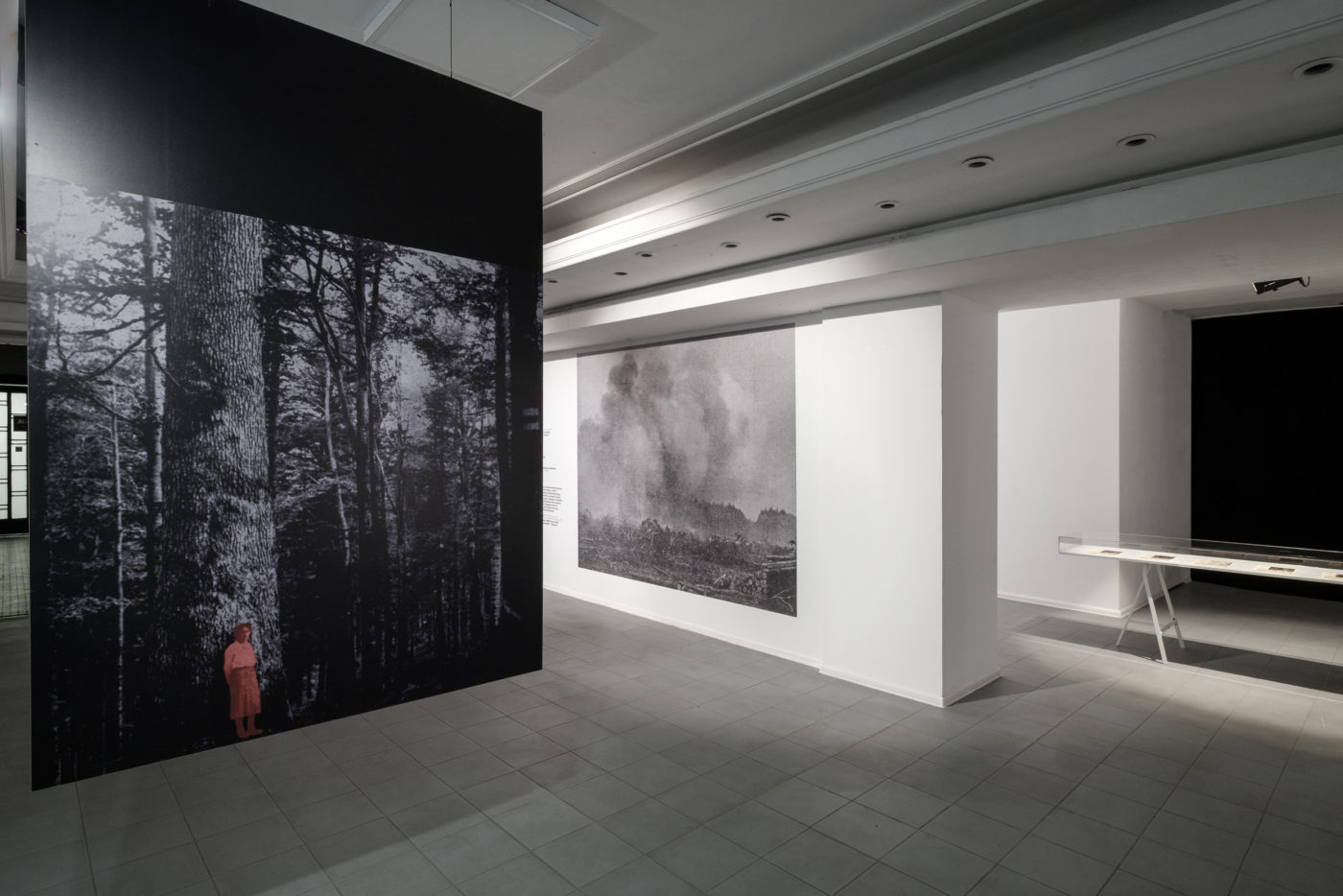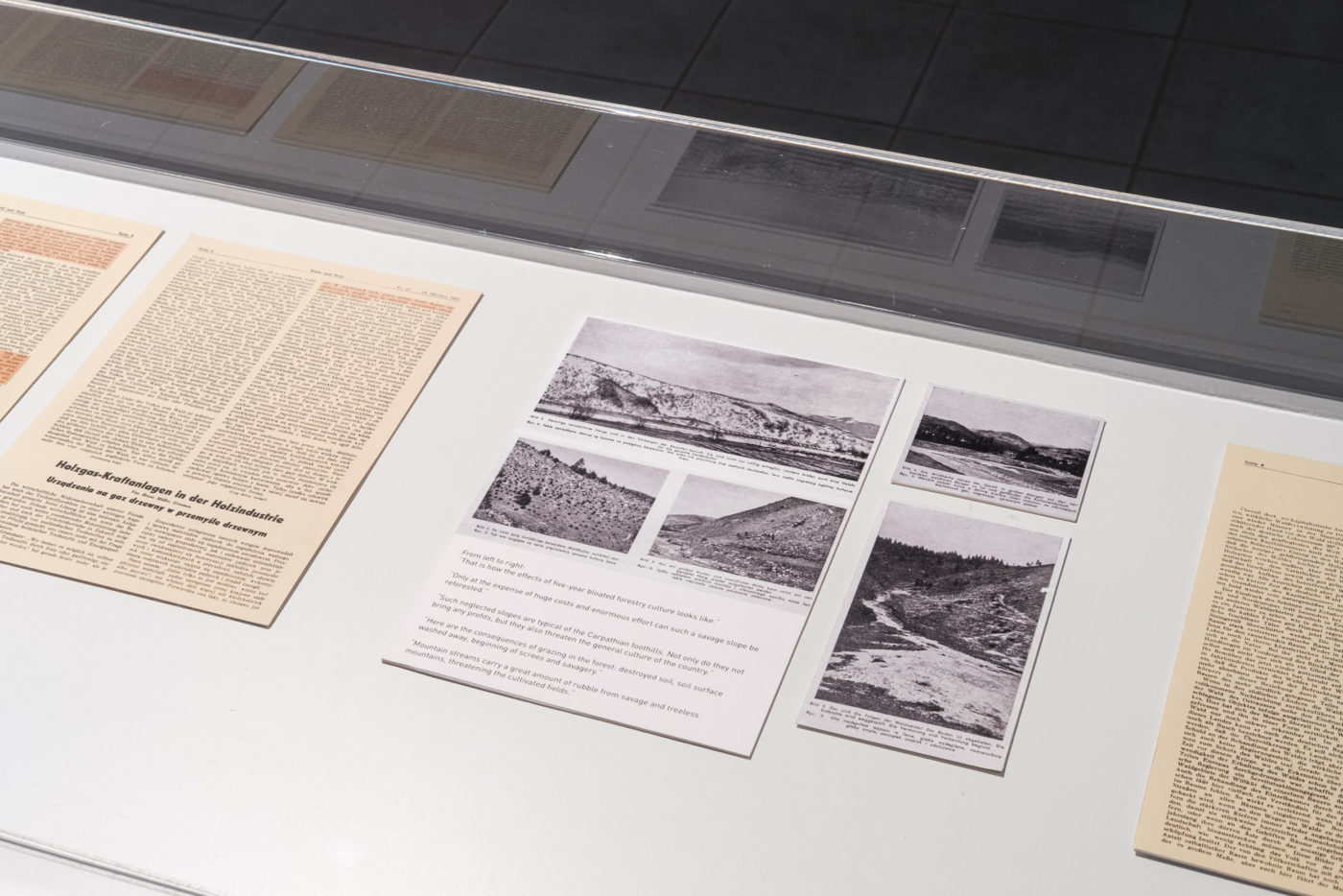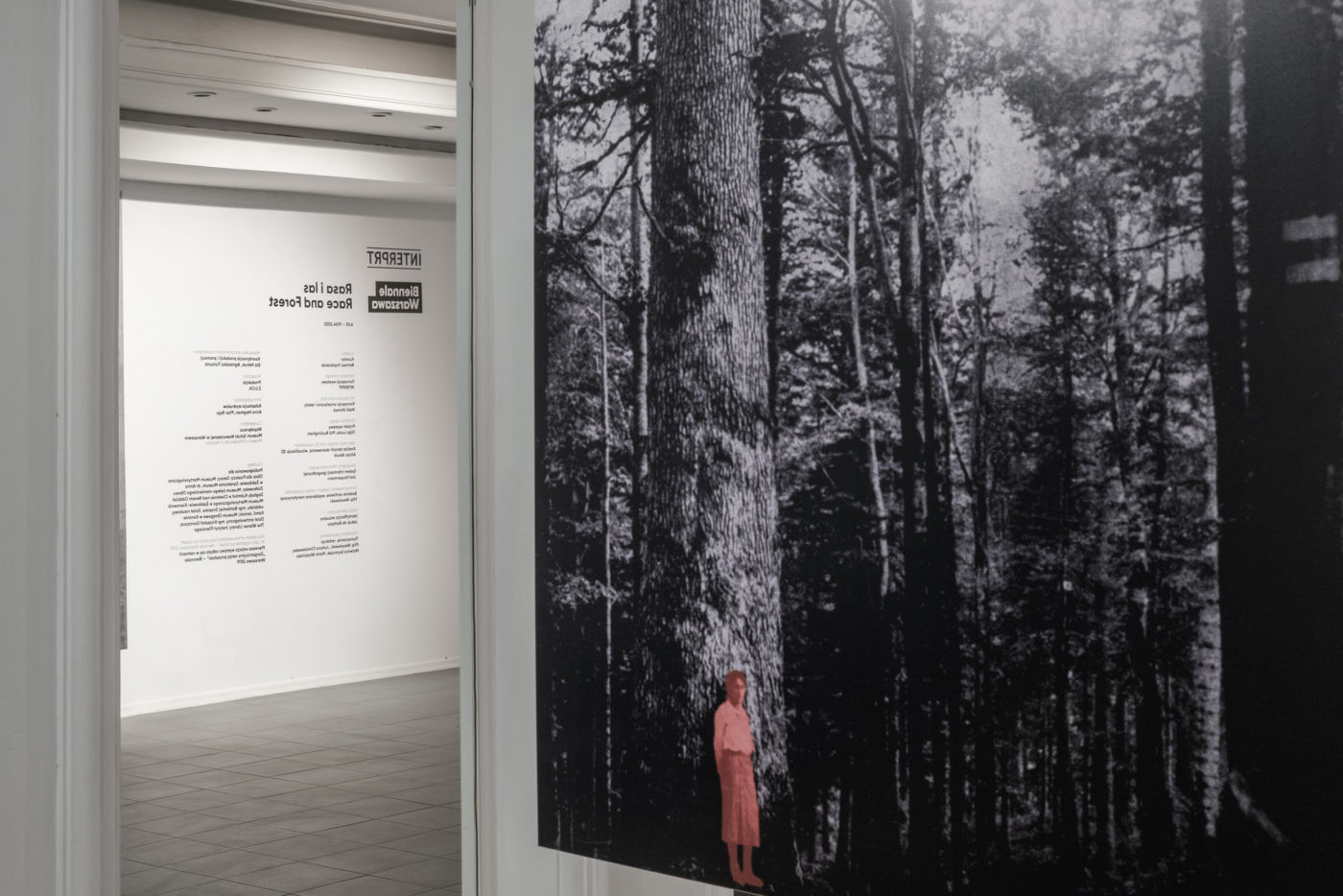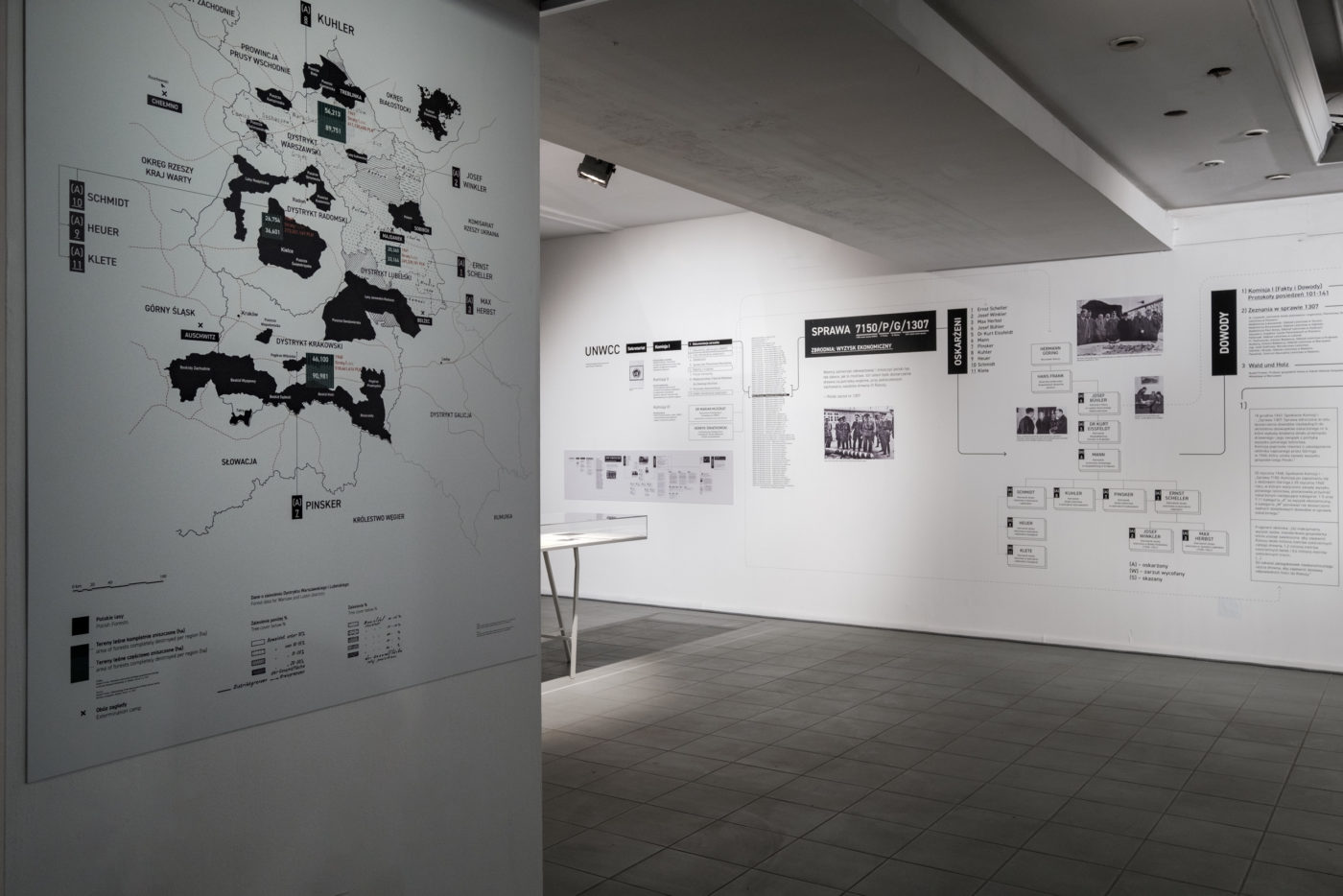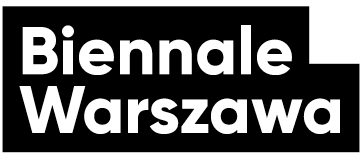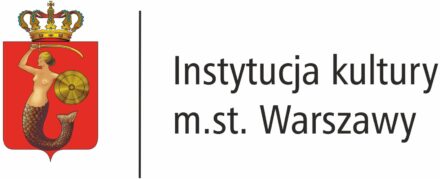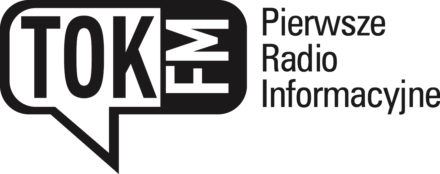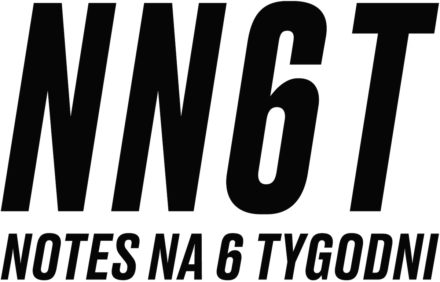Race and Forest
The exhibition will be open until 28 June 2020
INTERPRT
Discussions concerning the climate disaster more and more frequently mention the necessity to acknowledge ecocide as a crime in the light of international law. One of the first ever examples of charges where the environment became the main subject of court proceedings was a case presented by Polish prosecutors, concerning the destruction of Polish forests by Nazi Germany. Race and Forest, the exhibition shown at Biennale Warszawa reconstructs the circumstances of this precedential indictment.
Exhibition at Biennale Warszawa (MA3450) at 34/50 Marszałkowska St.
is open every weekend:Friday: 16:00–20:00
Saturday and Sunday: 11:00–15:00 and 16:00–20:00.Online documentary and 3D exhibition www.rasailas.pl
“Race and Forest” investigates the links between genocide, ecocide and forest management. The exhibition was prepared by an interdisciplinary research team INTERPRT which collects facts related to the crimes against the natural environment. It devotes particular attention to points where international humanitarian law intersects the legal protection of the environment. Re-entwining images, documents, testimonies and data from various sources, it creates a framework for new reflection. The project displayed at Biennale Warszawa examines the material and visual nature of the evidence in the case no. 1307.
Its history dates back to 1947, when as part of the United Nations War Crimes Commission (UNWCC), Poland brought against eleven German citizens charges of war crimes related to the destruction of the natural environment. Polish prosecutors prepared a bill of indictment not only for high ranking German state officials, but also the employees of German forestry departments. The trial concerned deliberate devastation of Polish forests in order to supply timber for German war efforts. At the same time Germany was developing modern forestry and taking considerable measures to conserve their own forests.
Part of the exhibition is devoted to the history of a Nazi death camp located near Chełmno nad Nerem (Kulmhof). In the first period of the operation of the camp – hidden in the Rzuchowski Forest – a secret reforestation plan was implemented in order to hide the evidence of mass graves. The investigative project carried out by INTERPRT in cooperation with Biennale Warszawa combines archival and cartographic research with wartime testimonies and LIDAR scanning to conduct a new spatial analysis of this area.
The exhibition will also feature materials concerning how were the race issue and environmental issues connected in the Third Reich ideology. Among them, “Wald und Holzer” (forest and timber), a periodical which during the Second World War was the official gazette of the forestry industry in the German-occupied areas. The data collected in it were supposed to help in effective exploitation of Polish forests. The paper propagated the ideology of environmental racism, according to which Germanic and Nordic people were to protect nature against the designs of savage Slavic peoples.
The new exhibition at Biennale Warszawa constitutes an expanded version of “Race and Forest” which was open for visitors for two weeks during “Let’s organise our future!”, during Biennale Warszawa in June 2019. It was supplemented by new materials, including first and foremost film footage prepared by INTERPRT at Home Works 8 in Beirut. Due to the unrest in Lebanon the event was cancelled, and new elements of the exhibition, the same as the lecture given by Nabil Ahmed (co-founder of INTERPRT), were not presented to the public. Now they will enrich the exhibition at Biennale Warszawa.
By analysing the history of genocide in the context of nature, “Race and Forest” includes the study of the Holocaust into the current deliberations about climate change and human responsibility for the environment. Can the case no. 1307 become a basis for considering nature as a legal entity? How to extend legal protection also to non-human beings, animals, or ecosystems?
Taking up the topic of crimes related to the environment requires a comprehensive view – not only new formulas of thinking, but also acting. When designing the communication for “Race and Forest” we wanted to reduce the environmental impact of our actions to a minimum. We have made only a single copy of a leaflet for our visitors to pass around, and a single poster exhibited for a limited time in various places. While reducing the industrial manufacturing of materials, we want the Internet to be the main source of information about the exhibition, and knowledge about it to travel by word of mouth and to be handed around. Pass it on.
Information
Race and Forest
until 28.06.2020
Friday: 16:00–20:00
Saturday and Sunday: 11:00–15:00 and 16:00–20:00.
The exhibition is presented in a space which is not entirely accessible for people with disabilities (no lift to the second level)
Admission: 10 PLN (normal), 5 PLN (concession)
Tickets available:
on the Biennale Warszawa website
via GoOut app
at Biennale Warszawa at 34/50 Marszałkowska Street (we accept cash and payment cards)
First edition of the exhibition took place as a part of Biennale Warszawa 2019 “Let’s organise our future!”.
Courtesy:
Obóz dla Puszczy; Geoxy; Muzeum Martyrologiczne w Żabikowie: Dyrektorka Muzeum, dr Anna Ziółkowska; Muzeum byłego niemieckiego Obozu Zagłady Kulmhof w Chełmnie nad Nerem Oddział Muzeum Martyrologicznego w Żabikowie: Kierownik oddziału, mgr Bartłomiej Grzanka, Dział naukowy, Kamil Janicki; Muzeum Okręgowe w Koninie: Dział archeologiczny, mgr Krzysztof Gorczyca; The Wiener Library; Instytut Pileckiego
Safe at Biennale
We are glad that you want to visit us. Comfort and safety of our visitors and employees are important to us.
What can you do?
Cover your nose and mouth, Use personal protective equipment (a mask, a scarf, or a visor). If you forgot to take one with you, we will give you a disposable face mask.
Use disinfectant on your hands before you enter the exhibition space.
Check your body temperature. If you are in doubt about your wellbeing, you can use our electronic thermometer to take your temperature.
Keep the safe distance. Take note if the distance between you and another visitor or a Promoter is greater than 1.5 meters.
Pay for your entree contactless or buy tickets online beforehand. Tickets are available on Biennale Warszawa website or via the GoOut app.
Please adhere to the limit of people allowed in the exhibition space at the same time.
Fill out the survey. It will help us adjust Biennale to your needs.
What are we doing for you?
We provide protective measures. Disinfectant is available on each floor. If need be, we can provide a disposable face mask.
We regularly disinfect and air our space. We introduced a service break from 15.00 to 16.00.
We take our temperatures before we start working.
We introduced a limit of visitors. At any one time, the exhibition can be attended by 10 visitors, including 1 person in the featured enclosed space with the video presentation.
The cloakroom and the coffee-and-tea corner are currently not in use.
Pass it on
When designing the communication for Race and forest we want to reduce the environmental impact of our actions to a minimum. We don’t send out paper invitations, we don’t produce gadgets, we have no outdoor advertising. Reducing the industrial overproduction, we want the Internet to be the main source of information about the exhibition, and knowledge about it to travel by word of mouth and to be handed around.
We have made only a single copy of the poster available for our visitors, exhibited for a limited time in various popular places. If you see it, please talk about it.
We made a single copy of a leaflet. If it finds its way into your hands, please treat it with respect and pass it on to another person who may be interested in the topic.
The leaflet and the poster can be downloaded from this website as digital files. But we are counting on natural ways of communication. Pass it on.




